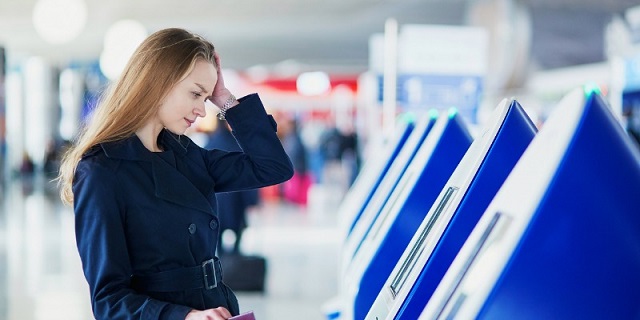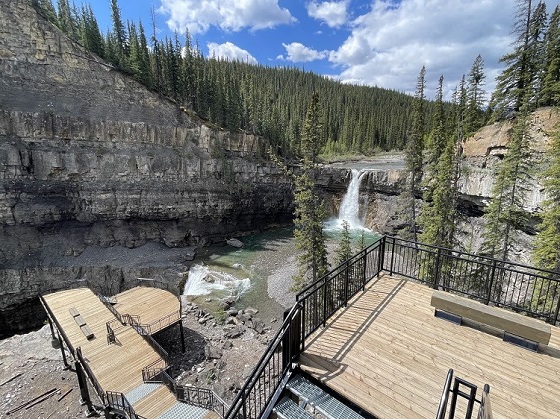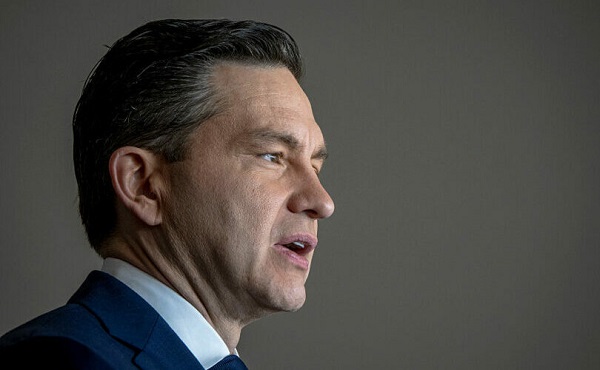Travel
Todayville Travel: Spring in Italy – Riccione and the Tuscan Hills

Second in the two-part series ‘Spring in Italy’.
“My head was down, focused on my churning bicycle pedals and the relentless climb up a twisting cobblestone road. What was I doing here? I’m not even fond of biking.”
The Most Serene Republic of San Marino is located smack dab in the middle of Italy. At 62 sq. km. it is one of the smallest nations in the world. Although only a few dozen kilometres from Italy’s Adriatic Coast, San Marino’s summit is almost 800 meters above sea level. And crowning this mountainous micro-state is the medieval Fortress of Guaita. My destination.
But I wasn’t looking up. My head was down, focused on my churning bicycle pedals and the relentless climb up a twisting cobblestone road. What was I doing here? I’m not even fond of biking.
I needed the exercise. We had been in Italy for almost two weeks and had yet to actually earn any of the fabulous meals we had devoured.
It was a tough three-hour slog to San Marino’s pinnacle – but an easy glide back down to the coastal town of Riccione, and the Belvedere Hotel where we were ensconced for four nights. The Belvedere is a “biker’s” hotel. Marina Pasquini, the proprietress, is a dynamic effervescent woman. Marina exudes the qualities of both caring mother and astute businesswoman. Her staff love her – and feed off her magnetism. This osmotic energy carries through to the guests – who are treated like family.
Marina is a wonderful cook. So after a gruelling 70-kilometre ride, I felt justified in accepting a second helping of her traditional Friday night paella. Marina is also an observant woman (I wouldn’t try stealing any silverware from the Belvedere). When we checked in she noted I was toting a ukulele:
“Would you like to play at lunch this afternoon? You’ll be biking up to a farmhouse and winery in the hills.”
“I can’t carry the ukulele on my bicycle,” I replied.
“Don’t worry, we can bring it up for you,” she said happily. “It will be wonderful.”
How could I say no?

Marina and her Friday night paella
On the ride up my wife Florence had bike problems. Her chain kept falling off. Our guide Dani-boy was nonchalant and pleasantly attended to each messy repair. When we arrived at the farmhouse his hands were black with grease.

Thanks Dani!
During lunch I scoured my brain for an appropriate tune to entertain a group of bicycle aficionados in the Rimini hills of Italy. After a four-course meal, a sweet dolce and plenty of vino di casa, the group was rambunctious. I tentatively plinked the ukulele.

An exhausted Gerry enjoys the view from the summit of San Marino
My truncated version of Dean Martin’s “That’s Amore” went over well.
Then I recounted Florence’s bike chain maladies by singing (with apologies to the Beatles):
“Chain, my baby’s got a tangled-up chain,
And it ain’t the kind, that you can cl-e-e-e-an,
But Dani-boy, fixed her chain for me. Yeah.”
The crowd went wild. Bike enthusiasts can be real nerds.
Dani-boy had a genuine tear in his eye. Despite their hot-blooded temperament, Italians can be surprisingly sentimental.
On our last Belvedere morning, as we checked out, the skies opened up. Disheartened cyclists, decked out in jerseys from around the world, sat and scanned the dreary sky. The ride was off for the day. Rain, steep narrow roads, zany Italian drivers and over-enthusiastic bicyclists do not mix well.
Marina was in the foyer to bid us arrivederci, offering a genuine hug – and a request that we soon return.
We were off to Tuscany, the final leg of our month-long stay in Italia. The GPS indicated that our AirBnb in Lucca was three hours away. But as per our usual modus operandi we took the road less travelled and turned what should have been a short jaunt into a seven-hour odyssey through the twisting narrow country roads and unsurpassable beauty of Tuscany.

The road less traveled
I enjoyed driving in Italy. Despite their crazy reputation, I found Italian drivers really get it (unlike some folks piloting cars on Alberta’s highways). I survived a month driving in Italy without incident: no fender-benders on narrow cobblestone streets, no roundabout collisions – and not one Italian offered a gesticulation as to where I might go and procreate.

However… it will be a miracle if the post office doesn’t eventually deliver a slew of photo-radar tickets and one-way street infractions. It is not an understatement to suggest that compliance with Italian driving laws is impossible. And Italian roads require super-human navigating skills. Florence (and our GPS) performed admirably – we were lost fewer than a dozen times.
When we arrived in Lucca our hostess met us outside the town walls, helped us park and escorted us to her lovely apartment in the heart of the Old City. (Our AirBnb experience throughout Italy was amazing. Our hosts were uniformly friendly, helpful – and available. Many even stocked the fridge with Italian delights for our arrival.)

Lucca
One fine afternoon we signed up for a wine-tasting tour in the famous Brunello region of Montalcino, near Sienna. En route we passed vineyard after vineyard, interrupted only by ancient olive groves. And it seemed every Tuscan hill was topped by an alluring fairytale-like village – with stone spires guarding the verdant fields of Italian spring.

“Mario loves making vino, his passion for sixty years. He has a certain – pardon my French – joie de vivre.”
Mario Ciacci is the octogenarian who founded and still oversees Abbadia Ardenga winery – although these days Mario’s role seems limited to entertaining customers, dancing with the lady guests – and sipping a little of his own beautifully-aged Brunello. He proudly walked us through the vintner’s process – and his priceless cellar – before serving us a simple lunch coupled with a multitude of his Abbadia vintages.

Mario Ciacci woos the ladies – when not making wine

Mario loves making vino, his passion for sixty years. He has a certain – pardon my French – joie de vivre. Mario is also a seasoned salesman; in addition to my traffic tickets, any day now we’re expecting an overseas shipment of Brunello wine.
After three nights in Lucca and four in Sienna we moved on to Orvieto for our final few Italian nights. In each of these towns the itinerary was simple: explore the narrow, confusing streets of the city core for a day, then hop in the car and tour the surrounding countryside for a couple of days.

Ponte Della Madallena near Lucca
“The gold-gilded façade of the Duomo is spectacular at sunset.”
All of these walled cities have their unique character but Orvieto is perhaps the most charming – and interesting. Built atop a flat butte of volcanic tuff, the town has remained impregnable for millennia. Its high walls provide a natural defense that could not be breached. The city was also immune to enemy siege. Water was drawn from the ingeniously designed well of San Patrizio and food literally flew in through the windows: the people farmed pigeons. Thus both food and water were readily available without leaving the protection of the fortress.
Orvieto is home to one of Italy’s most striking Gothic cathedrals. The gold-gilded façade of the Duomo is spectacular at sunset. And beneath the streets an ancient labyrinth of tunnels was carved into the tuff, designed for quick escape. (Perhaps flight from this siege-proof city would have been necessary had Orvieto been infiltrated by stool pigeons?)

Duomo in Orvieto
We’ve been home for some time now and the traffic tickets have yet to arrive – but I take solace in the fact that when they do there will be a hearty glass of Brunello at hand to ease the pain.
If you go: The Belvedere Hotel specializes in hosting bike enthusiasts from around the world.
Gerry Feehan QC practised law in Red Deer for 27 years before starting his second life as a freelance travel writer and photographer. He says that, while being a lawyer is more remunerative than travel writing, it isn’t nearly as much fun. When not on the road, Gerry and his wife Florence live in Red Deer and Kimberley, BC. Todayville is proud to work with Gerry to re-publish some of his most compelling stories from his vast catalogue developed over more than a decade of travel.

Gerry Feehan
Enjoy an excellent adventure in Texas. Click below.
Business
Here’s why your plane ticket is so expensive

From the Fraser Institute
By Alex Whalen and Jake Fuss
While the strike by WestJet mechanics lasted only a few days, many Canadian air travellers faced long delays and cancelled flights. More broadly, according to the Canadian Transportation Agency, customer complaints have hit an all-time high.
Yet many dissatisfied travellers likely don’t realize that Ottawa heavily contributes to their frustrations. Let’s look at the various ways federal policies and laws make air travel worse in Canada.
First, federal laws insulate Canada’s airlines from competition. Foreign airlines are subject to highly restrictive “cabotage” laws which, for example, dictate that foreign airlines cannot operate routes between Canadian cities. At the same time, foreign investors are forbidden from owning more than 49 per cent of Canadian airlines. By restricting international participation in the Canadian air travel market, these laws both deprive Canadian consumers of choice and insulate incumbent airlines from competition. When consumers have more choice, incumbents have a greater incentive to improve performance to keep pace with their competitors.
Second, a wide array of taxes and fees heavily influence the cost of airline tickets in Canada. Airport improvement fees, for example, average $32.20 per departing passenger at airports in Canada’s 10 largest markets. In contrast, airport improvement fees in the United States cannot exceed $4.50. And last year the Trudeau government increased the “air travellers security charge” by 32.85 per cent—this fee, which now ranges from $9.94 to $34.82 per flight, is higher in Canada than the U.S. across all flight categories. On the tax front, in addition to fuel taxes including the federal carbon tax, the federal excise tax on unleaded aviation gasoline in Canada is 10 cents per litre compared to 6.9 cents per litre in the U.S. And the U.S., unlike Canada, does not apply sales taxes to aviation fuel.
Third, air travel is a heavily regulated sector. Federal legislation generates thousands of provisions airlines must follow to operate legally in Canada. Of course, some regulation is necessary to ensure passenger safety, but each regulation adds administrative and compliance costs, which ultimately affect ticket prices. To lower the cost of air travel, the federal government should reduce the regulatory burden while maintaining safety standards.
Lastly, the ownership model of Canada’s airports results in a yearly transfer of rent to the federal government. The federal government used to own Canada’s national system of airports until they were transferred to private not-for-profit corporations in the early 1990s. However, these airports must still pay rent to the federal government—nearly half a billion dollars annually, according to the Canada Airports Council. As with the other examples listed above, these costs are ultimately passed on to consumers in the form of higher ticket prices.
While a precise estimate is difficult to obtain, various government policies, taxes and fees comprise a large share of the cost of each airline ticket sold in Canada. With complaints from travellers at all-time highs, the federal government should reduce the regulatory burden, increase competition, and lower fees and taxes. Policy reform for air travel in Canada is long overdue.
Authors:
Alberta
Just in time for Canada Day weekend! Crescent Falls ready to be enjoyed again

The new staircase structure and viewing platform are among many upgrades that visitors can look forward to at the reopening Crescent Falls Provincial Recreation Area. (Credit: Alberta Parks).
The popular Crescent Falls Provincial Recreation Area reopens following a significant capital investment to improve visitor safety and experiences.
Crescent Falls Provincial Recreation Area is ready to welcome visitors back to enjoy one of the most remarkable, accessible waterfall viewing opportunities in Alberta. The upgrades at Crescent Falls will help improve the park’s visitor experience. Guests can expect expanded parking, improved access roads, trails and day use areas, new and improved viewing areas to take in the falls and upgraded safety measures, including signage and wayfinding.
The Provincial Recreation Area (PRA) is reopening over the July long weekend after being closed since 2023. Visitors will notice increased public safety upgrades through additions such as new parking lots, a new stair structure to access the lower falls, new pedestrian trails, a new vehicle bridge to access the camping area and a viewing platform to enjoy the Crescent Falls.
“We are thrilled to welcome visitors back to Crescent Falls Provincial Recreation Area in time for the Canada Day long weekend. These additions will help visitors to safely access and enjoy the area’s natural beauty. Parks are for people and Alberta’s government will continue to invest in high-quality outdoor recreation opportunities.”
“Today marks a significant milestone for our community as we reopen the Crescent Falls Provincial Recreation Area following extensive upgrades. Our province is well known for its incredible natural beauty, and these improvements will make our backcountry more accessible and ensure that Albertans and those visiting our great province can continue to explore our stunning landscapes for years to come.”
-

 2025 Federal Election2 days ago
2025 Federal Election2 days agoThe Anhui Convergence: Chinese United Front Network Surfaces in Australian and Canadian Elections
-

 2025 Federal Election2 days ago
2025 Federal Election2 days agoTrump Has Driven Canadians Crazy. This Is How Crazy.
-

 2025 Federal Election1 day ago
2025 Federal Election1 day agoPoilievre Campaigning To Build A Canadian Economic Fortress
-

 Automotive1 day ago
Automotive1 day agoCanadians’ Interest in Buying an EV Falls for Third Year in a Row
-

 2025 Federal Election2 days ago
2025 Federal Election2 days agoCarney Liberals pledge to follow ‘gender-based goals analysis’ in all government policy
-

 2025 Federal Election2 days ago
2025 Federal Election2 days agoPoilievre’s Conservatives promise to repeal policy allowing male criminals in female jails
-

 Entertainment2 days ago
Entertainment2 days agoPedro Pascal launches attack on J.K. Rowling over biological sex views
-

 conflict2 days ago
conflict2 days agoTrump tells Zelensky: Accept peace or risk ‘losing the whole country’











